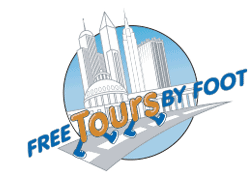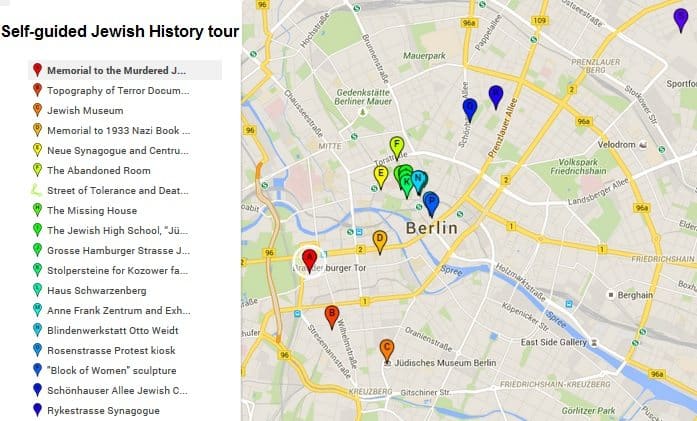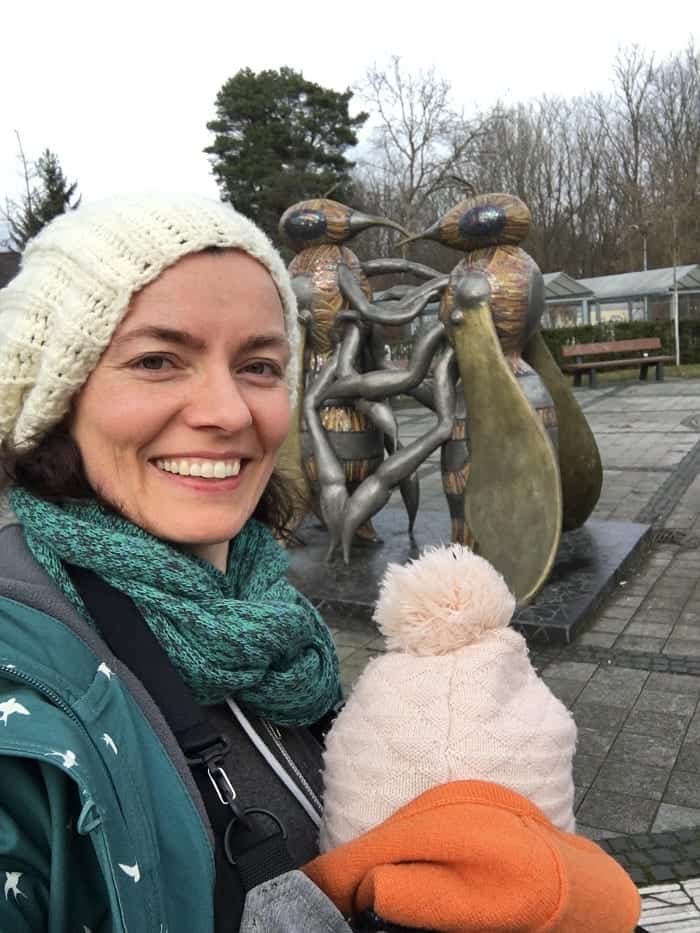This self-guided Jewish Berlin Tour gives a short overview of the major sights in Jewish history in Berlin. For centuries, Berlin had a vibrant Jewish culture and was the birth place of important Jewish movements such as the Jewish Enlightenment in the 17th Century and the Reform and Modern Orthodox movements. Despite times of hardship, the community was thriving right up until the rise of the Weimar Republic in the 1930’s. The 1933 census counted 160,000 Jews living in Berlin, but in less than 15 years, the Jewish population of Berlin was reduced to 8,000. Hitler’s ‘Final Solution’ – the carefully planned extermination of Jews – had decimated the Jewish population of Berlin and most of Europe. In addition to the massive loss of life, many of Berlin’s Jewish institutions, synagogues, schools and cultural sites were destroyed during the war.
Since the reunification of East and West Germany, Berlin’s government has strived to make Berlin a city that once again welcomes Jews and their unique culture. The city as well as individual foundations have made it a point to create sites and memorials throughout the city to honor the 6 million Jews who were murdered by Hitler’s Germany.
Today, surprisingly, the city that is regarded with disdain by many people as the command center Hitler’s Third Reich, is now home to more than 45,000 Jews and continues to grow. Jews are moving to Berlin from places like Australia, Eastern Europe, Russia, France and United States. There are signs once of Jewish life once again and though this tour focuses on the past and the terrible loss of life, the existence of the memorials you will see is a testament to the hopeful future for Jews in Berlin.
Click to enlarge or for movable map for the self-guided Jewish Berlin Tour and be sure to check out our full list of self-guided Berlin walking tours.
Helpful resources: Jewish institutions and contacts and kosher restaurants or markets.
Memorial to the Murdered Jews of Europe (A)
Cora-Berliner-Strasse 1
S-Bahn: S1, S2, S25, Brandenburger Tor or Potsdamer Platz;U-Bahn: U2 to Potsdamer Platz or Mohrenstrasse; U55 to Brandenburger Tor.
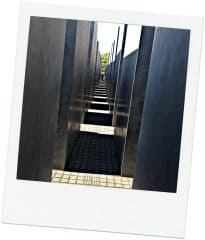
Memorial Information Center and Museum (A)
Cora-Berliner-Strasse 1, lower level.
For a more in-depth understanding of the Holocaust, you can visit the Information Center and small museum located beneath the memorial. Here you can see several permanent exhibits that display individual testimonies from survivors and photographs of the events of the Holocaust. There is a room in which a continuous audio-loop reciting the name of every known Holocaust victim. It takes six years for the audio loop to complete one cycle. There are also fascinating rotating exhibitions on special topics.
Admission: Free Hours: Apr-Sept: Tue-Sun, 10 a.m.-8 p.m. (last admission 7:15 p.m.); Oct-Mar: Tue-Sun, 10 a.m.-7 p.m. (last admission 6.15 p.m.); Closing days Dec. 24 to 26, Dec. 31 from 4 p.m. The Information Centre is open on all the other holidays including Easter Monday, Pentecost Monday and May 1. For more background information see our blog post on the Memorial.
The Topography of Terror Documentation Centre and Terrain (B)
Niederkirchnerstrasse 8.
U-Bahn: Potsdamer Platz or Kochstrasse; S-Bahn: Anhalter Bahnhof or Potsdamer Platz.

Admission: Free. The museum offers free guided tours. Hours: Open daily from 10am-8pm. Closed December 25, 31 and January. For a detailed history of the museum’s development and goals, visit our blog post on the Topography of Terror Exhibition.
Jewish Museum (C)
Lindenstrasse 9-14.
U-Bahn: U1 or U6 to Hallesches Tor; U6 to Kochstrasse.
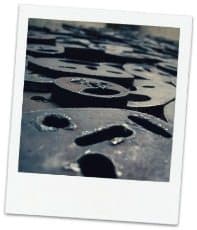
Admission: Adults: 8€ (children under 7 are free), reduced charges 3€; Family Ticket (2 adults and up to 4 children) 14 €. Hours: Monday from 10 a.m. to 10 p.m., Tuesday-Sunday from 10 a.m. to 8 p.m. *Please plan sufficient time for the security checks at the museum entrance. Check the Museum website for holiday closings which vary each year. If you are interested in the development of the Museum and its architecture and exhibits, check out our blog post.
The “Empty Library” (D)
Bebelplatz.
U-Bahn: U6 to Französische Strasse.
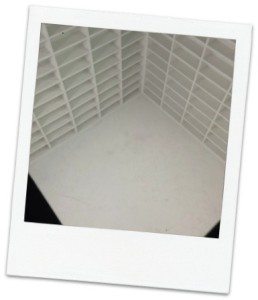
Neue Synagoge (New Synagogue) and Centrum Judaicum (E)
Oranienburger Strasse 28-30.
S-Bahn: S2 to Oranienburger Tor.
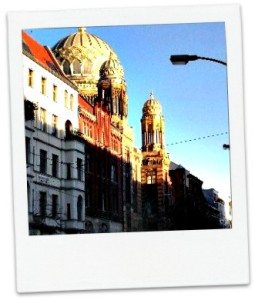
On November 9-10, 1938, Nazi Party members, Hitler Youth and some non-Jewish civilians went on a government sanctioned rampage against Jews throughout Germany and Austria. Jewish owned businesses, schools, hospitals and synagogues were set on fire, ransacked and had their windows smashed (hence the name “Night of Broken Glass”). Approximately 96 Jews were killed during Kristallnacht and 30,000 Jews were arrested and deported to “work” camps (soon to become death camps). Within two days, over 7,000 Jewish businesses destroyed or damaged and 1,000 synagogues throughout Germany and Austria were burned down. The New Synagogue narrowly escaped being in destroyed, but in the end it could not survive the massive bombings by the Allies toward the end of the war. Today, the synagogue is not a house of worship (there are two other synagogues and 10 houses of prayer in Berlin, compared to the 33 synagogues in pre-war Berlin). Instead the synagogue houses the Centrum Judaicum foundation which opened in 1995, an institution for the preservation of Jewish memory and tradition. There is also a community congregation center for study and teaching and a museum and information center with exhibits including Torahs and scrolls.
Admission: Free. Hours: Sun-Friday although times vary throughout the year. See the synagogue’s website for more information.
“The Abandoned Room” sculpture (F)
Koppenplatz and Linienstrasse.
U-Bahn to Rosenthaler Platz.
On the north end of a small playground at Koppenplatz is a bronze sculpture by Karl Biedermann made in 1996. The sculpture depicts a simple everyday scene of a table and two chairs on a ‘parquet’ floor. One of the chairs is lying on the floor, as if the person who had been sitting there had to suddenly leave, accidently knocking the chair over on their hurry. This scene is to remind us of the many Jews who had to flee for their lives, often with no notice. Around the border of the floor of the scene are lines from poems by Nobel Prize winner Nelly Sachs. The English translation of the lines are: “Oh the houses of death; invitingly appointed, for the landlord of the house who was once a guest. Oh you fingers, Laying the threshold, like a knife between life and death. Oh, you chimney stacks, Oh you fingers; And the body of Israel going up in smoke!”
“Street of Tolerance and Death”
Grosse Hamburger Strasse from Auguststrasse to Oranienburger Strasse
Unlike the massive Memorial to the Murdered Jews (the first stop on this tour), a walk down this small stretch of street provides a sense of intimate connection with the Jews of Berlin who were arrested, deported and murdered by the German Third Reich and Hitler’s ‘Final Solution’. Prior to Hitler’s rise to power, this street was known for its tolerance- here Jewish sites existed peacefully alongside other religious institutions such as St. Hedwigs Catholic Hospital and the Protestant cemetery of the Sophien Church. Below are the sites to see along this street.
The “Missing House” (H)
15-16 Grosse Hamburger Strasse.
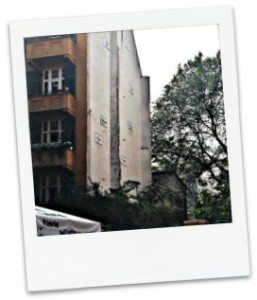
Across the street is a school, on the site of the former Jewish School for Boys (I) founded in 1862. Down the block was the first Jewish Old People’s Home which opened in 1844. Both these revered institutions were closed down and confiscated by the Gestapo in 1942 and converted into Judenlager (meaning literally Jewish camp, but were actually holding centers) where Jews were detained prior to their deportation. It was from these two buildings on this small street that more than 55,000 Jews were held and then sent to their deaths at concentration camps. The Old People’s Home was destroyed, but the school building was able to reopen 50 years later and is now a co-ed school for Jewish and non-Jewish children.
Toward the end of the street is the site of the former Grosse Hamburger Strasse Cemetery (J). 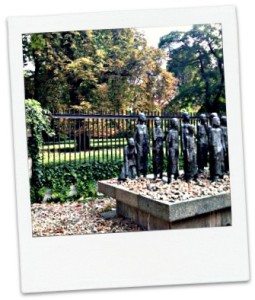
Stolpersteine (K)
corner of Grosse Hamburger Strasse and Oranienburger Strasse.
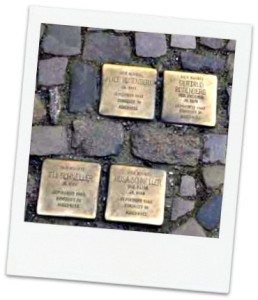
Haus Schwarzenberg (L)
Rosenthaler Strasse 39.
S-Bahn: S5,S7,S75 to Hackescher Markt. U-Bahn: U8 to Weinmeisterstrasse.
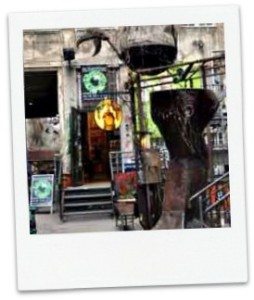
One museum, the Gedenkstatte Stille Helden (Silent Heroes Memorial Center) honors and commemorates local non-Jewish civilians who risked their lives to aid and rescue persecuted Jews. The center exhibits documents, photographs and oral testimonies that tell the tales of heroic successes but also tragic failures. Hours: Daily from 10-8pm; closed December 24th. Admission: Free.
At a second museum, you can learn about one of the success stories at the Otto Weidt Blindenwerkstatt (N) (Otto Weidt Workshop for the Blind). Otto Weidt had a small broom and brush factory here. Prior to the war he had employed Jewish workers, many of whom were blind, already a noble gesture. In 1942, the Gestapo arrested these Jewish workers, but Weidt managed to convince the authorities to release some of them. Weidt then hid these Jews in a back room until the end of the war, risking his own life to save theirs. Hours: Mon-Sun 10am-8pm. Closed on December 24th. Admission: free. Public Tours: Sundays at 3pm (no prior registration required).
Lastly, there is the Anne-Frank-Zentrum (M) and its permanent Anne Frank Exhibition. This is an engaging exhibition that expands on the life and themes of the well-known Jewish girl who hid in a house in Amsterdam. Hours: Tues-Sun 10am-6:00pm. Admission: Adults 5€, children under 10 free, reduced charges 3€, Family Ticket 12 €.
Rosenstrasse Protest Site and Memorial (O)
Rosenstrasse 2-4.
S-Bahn: Hackescher Markt; U-Bahn: U8 to Alexanderplatz.
Until 1943, Berlin’s Jews who were married to non-Jews were exempted from deportation to concentration camps. But in early 1943, this policy was changed and the Nazi regime began its Fabrikaktion (Operation Factory), the deportation of Jewish men in these mixed-marriages. On February 28, 1943, between 1,500 and 2,500 Jewish men were taken to a Jewish community building on Rosenstrasse and detained inside. Fearing that the next step would be immediate deportation of their husbands, the non-Jewish wives and relatives protested at the site. After 5 days of demonstrations, unexpectedly and amazingly the men were released. Some say the Nazi regime wanted to avoid growing demonstrations and the attention they would draw. The building where the men were held was destroyed during the war but you can read about the events of the protest and see photographs on a red kiosk pole the intersection of Rosenstrasse and Heidereutergasse. In nearby park across from the City Stay Hostel is a sculpture entitled Block der Frauen (Block of Women) (P) dedicated in 1995 and carved by sculptor Ingeborg Hunzinger. The inscription reads: "The strength of civil disobedience, the vigor of love overcomes the violence of dictatorship; Give us our men back; Women were standing here, defeating death; Jewish men were free." You can see the kiosk and sculpture 24 hours daily.
Schönhauser Allee Cemetery (Q)
Schönhauser Allee 23-25.
U-Bahn: U2 Senefelderplatz
After the closure of the Old Jewish Cemetery on Grosse Hamburger Strasse, the Jewish community opened this 12 acre cemetery in 1827. Over 20,000 individuals are buried here. The cemetery was closed in 1880 with the opening of the larger cemetery in Weissensee. The list of prominent scientists, entrepreneurs, writers, academics and artists laid to rest in the cemetery is quite long. The cemetery is overgrown with ivy and many tombstones are broken and piled up. This damage was not due to any deliberate Nazi acts of destruction but rather bombing hits during the World War II destroyed most of the cemetery buildings and devastated many burial sites. All that remains today of the main portal is the round-arched side entrance on the right and the double grille of the central entrance. In 2005, a lapidarium (a place that exhibits archeological artifacts of stone such as broken columns, stone monuments and tombstones) was created and contains 60 gravestones separated from their original location. On display are also illustrations about Jewish cemetery culture and Jewish mourning rituals.
Admission: Free. Hours: Mon-Thurs 8am-4pm, Fri: 7:30am-2:30pm.
Rykestrasse Synagogue (R)
Rykestrasse 53.
U-Bahn: U2 Senefelderplatz.
Opened in 1904, this is the largest synagogue in Germany. Like the Neue Synagogue, Rykestrasse had been spared complete destruction during Kristallnacht because the Nazis did not want to risk endangering the surrounding houses of non-Jews. But two years later, the synagogue was confiscated by the Nazis in April 1940. After the war ended in July 1945, it reopened for services, but as it was located in communist East Berlin, there were few Jews who used the undamaged parts of the synagogue for prayer. After Germany and Berlin’s reunification, renovations began and after multiple periods of renovation, the synagogue was fully restored on its 100th anniversary. The Neo-Romanesque style interior with its large stained glass windows and splendid embellishments is able to accommodate 2000 people attending prayers.
Admission: Free. Hours: Open to the general public on Thursdays from 2-6pm & Sundays 12-4pm.
Weissensee Cemetery (S)
Herbert-Baum-Strasse 45.
S-Bahn: Berlin Greifswalder Strasse then take Tram M4. For directions from any location, use the Visit Berlin transportation finder.
If you plan to visit this largely intact historic cemetery, give yourself plenty of time. Opened in 1880 on 1000 acres of land, this is the second largest Jewish cemetery in Europe. Over 115,000 people are buried here. Throughout the Nazi era of death and destruction and then years of neglect under the East Berlin communist government, the cemetery and its beautiful structures has survived mostly intact. Approximately 4000 graves were damaged by Allied bombing during the war. After the war ended and until German reunification, the few remaining Jews of Berlin continued to use the cemetery. In the 1970s, plans to build an expressway over part of the cemetery were considered, but due to strong objections from the Jewish community, the plan was dropped. Among the sites to see in the cemetery are the burial plot for 90 of cemetery’s Torah scrolls which were desecrated during 1938’s Kristallnacht . There is also a monument honoring the 6 million Jews who were victims of the Holocaust and also a memorial to the Jews who lost their lives during World War I.
Admission: Free. Hours: Always closed on Saturdays and Jewish holidays. Seasonal hours: April-September Mon-Thurs 7:30am-5pm, Fri 7:30am-2:30pm, Sun 8:00am-5pm. October-March Mon-Thurs 7:30am-4pm, Fri 7:30am-2:30pm, Sun 8:00am-4pm.
FARTHER OUT OF BERLIN
Gleis 17 (Platform 17) Memorial at Grunewald (T)
S-Bahn: S7 to Grunewald station. Exit station and follow signs to Gleis 17.
Once a functional track, today this platform track is a memorial commemorating the deportation of approximately 50,000 Jews from this site between 1941 and 1945. The memorial is composed of plaques next to the railroad tracks that list every transport the number of deportees and their final destination. Many of the transports brought these Jews to the Jewish ghettos in Theresienstadt, Minsk, Riga, Kaunas and Łódź, where most of them died. Starting in July 1942 several transports went directly to Auschwitz-Birkenau and other death camps. The Memorial is open to the public.
Wannsee Conference House (U)
Am Grossen Wannsee 56-58.
By S-Bahn: S1 in direction Potsdam Hbf. or S7 in direction Wannsee. Exit at station Berlin-Wannsee, then take Bus 114 in direction Heckeshorn until stop Haus der Wannsee-Konferenz.
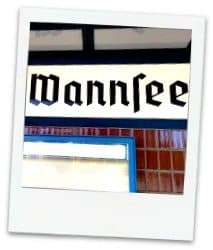
Admission: Free. Hours: Every day from 10:00am-6:00pm. Closed January 1, Good Friday, May 1, Ascension Day, October 3, December 24-26, December 31.
Sachsenhausen Memorial and Museum (V)
Strasse der Nationen 22, Oranienburg.
For detailed directions to the Memorial, see the Memorial information website.
Sachsenhausen Concentration Camp was one of the largest camps established by the Third Reich and used by them between 1936 and 1945. Approximately 200,000 people from all over Europe were imprisoned here and forced into ‘slave labor’ for the surrounding industrial companies. Tens of thousands of prisoners died due to inhumane working and living conditions. Prisoners were tortured and used for unusual and deadly medical experiments. Thousands more were murdered in gas chambers. Between 1945 and 1960 the Russian KGB used the site and its existing prison buildings as a so-called ‘silencing camp’ for enemies of the communist regime. In those years, around 60,000 prisoners lived here under the most severe conditions. Around 12,000 of these died due to the terrible conditions in the camp, starved to death or fell victim to disease. In 1993, the Memorial and Museum were established.
Admission: Free. Hours: Closed on Mondays. For open hours (which vary by season) see the Memorial information website.
Written by Courtney Shapiro
